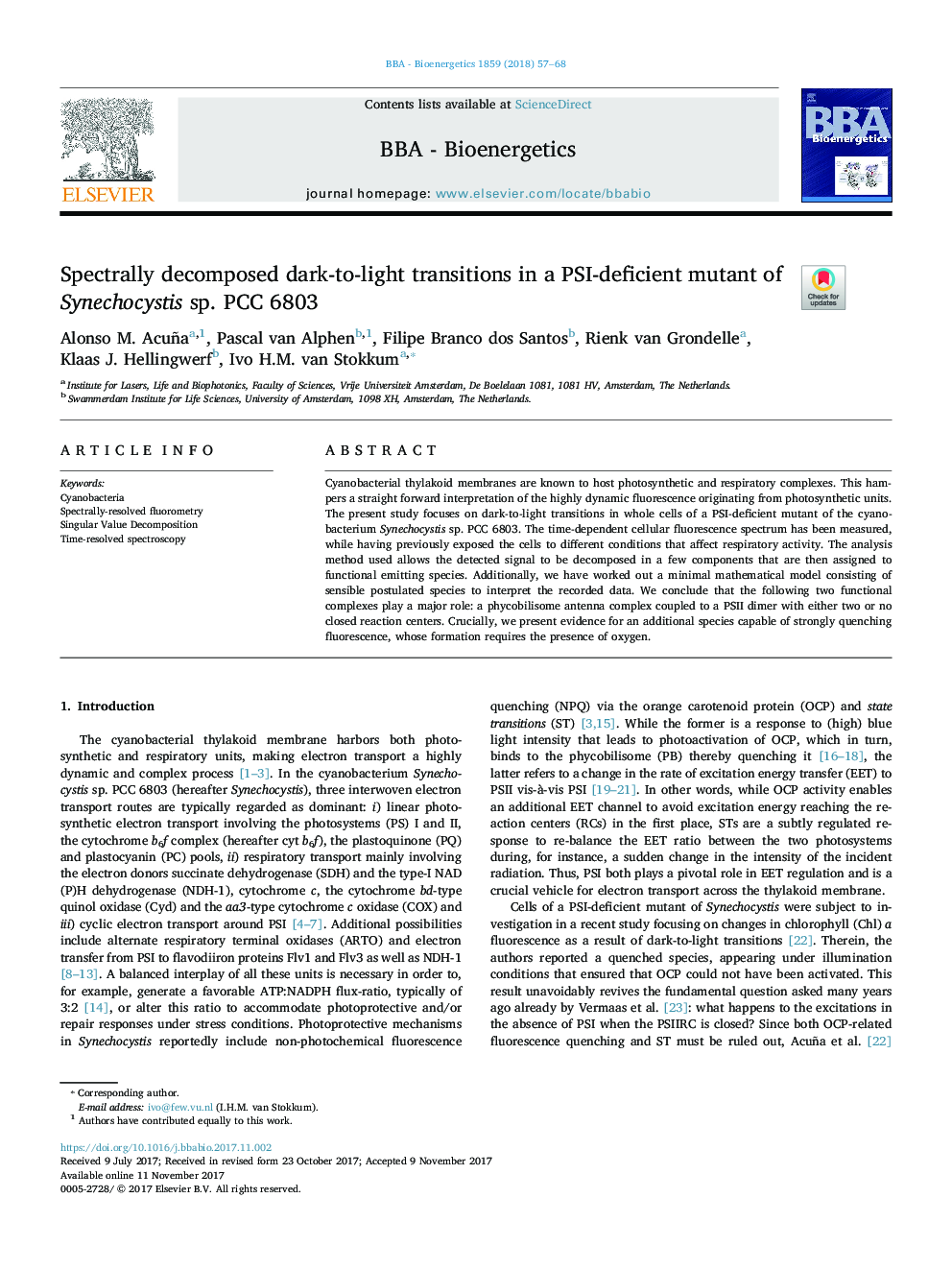| Article ID | Journal | Published Year | Pages | File Type |
|---|---|---|---|---|
| 8298653 | Biochimica et Biophysica Acta (BBA) - Bioenergetics | 2018 | 12 Pages |
Abstract
Cyanobacterial thylakoid membranes are known to host photosynthetic and respiratory complexes. This hampers a straight forward interpretation of the highly dynamic fluorescence originating from photosynthetic units. The present study focuses on dark-to-light transitions in whole cells of a PSI-deficient mutant of the cyanobacterium Synechocystis sp. PCC 6803. The time-dependent cellular fluorescence spectrum has been measured, while having previously exposed the cells to different conditions that affect respiratory activity. The analysis method used allows the detected signal to be decomposed in a few components that are then assigned to functional emitting species. Additionally, we have worked out a minimal mathematical model consisting of sensible postulated species to interpret the recorded data. We conclude that the following two functional complexes play a major role: a phycobilisome antenna complex coupled to a PSII dimer with either two or no closed reaction centers. Crucially, we present evidence for an additional species capable of strongly quenching fluorescence, whose formation requires the presence of oxygen.
Related Topics
Life Sciences
Agricultural and Biological Sciences
Plant Science
Authors
Alonso M. Acuña, Pascal van Alphen, Filipe Branco dos Santos, Rienk van Grondelle, Klaas J. Hellingwerf, Ivo H.M. van Stokkum,
